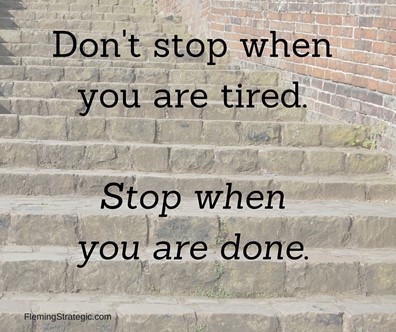This week’s blog post is by Janet Valenza, Founder, President, and Designer of GOGOgracious™, the women’s clothing brand and direct selling company.
Janet and I have had a couple of virtual “get acquainted” coffees recently, and I appreciated her suggestions for dressing in a way that’s both comfortable and professional while working from home. Your appearance is part of your brand, so getting this right really matters. Enjoy her article on a challenge many of us are facing during these Zoom-centric days.
And please remember to join my colleague Ivy Slater and me on December 17 for Implementing Your 2021 Vision for a Profitable Practice, the next webinar in our series Building a Profitable Practice in Uncertain Times. Learn more and register HERE.
Is It Time to Upgrade Your Work-from-Home Clothes?
by Janet Valenza
A couple of my clients said to me lately “I don’t need to buy clothes anymore; I’m not going anywhere.”
For me, “not going anywhere” isn’t the issue. I’ve learned that looking my best means feeling my best. Getting dressed fully in the morning gets me jazzed for the happiest, most productive day. This attitude was in place long before the pandemic, and it held true regardless of whether I was spending the day working at home or in the office, running errands, lounging, playing, going to dinner, or some combination of the above. And, of course, if you’re working with clients, being well-dressed for working from home is non-negotiable.
There’s scientific evidence to back this up. A recent article for the Wall Street Journal cites a study by Dr. Adam Galinsky of Columbia University in which he concludes, “An elevated cohesive casual look signals the brain for higher productivity.” He goes on to elaborate that when we have dressed appropriately for the day’s work, we think at a higher, more creative level.
Yes, we all have a lot of Zoom calls right now. And granted, looking good on Zoom is important, whether you’re meeting with clients or colleagues. But as Dr. Galinsky discovered, it’s not just about how we appear to others on Zoom calls. And it’s certainly not about dressing from the waist up.
The goal. I believe. is getting dressed every day for work so that we feel comfortable and also look like a leader, inside and outside the home, on and off Zoom.
Here are some simple suggestions to accomplish that goal, beginning with what’s likely already in your closet.
- Start with the first layer. For women, that means a comfortable sports bra and some leggings. For men, it’s a tapered stretchy activewear pant.
- Add a fitted (can be loose around the middle but not boxy or baggy) tank top, or racerback top. For men, choose a nice T-shirt.
- Take a look in your closet and pull out any shirts or tops with a collar. Why a collar, you ask? Because a collar highlights the face on Zoom calls and, more importantly, lends leadership presence.
- Evaluate each shirt to determine if it’s knit or woven. Wovens are often stiffer and more formal. Think cotton shirt. Knits are generally softer, stretchy, and more casual.
- Eliminate the wovens. They’re simply too formal for work-at-home wear.
- Layer the collared knit shirt over your initial layer.
Presto! You’re comfortable, Zoom ready, and proud to go outside! See the example below of client Sharon looking smart in the GOGOgracious™ black and white knit shirt. She is comfortable, yet she looks like a leader. You can find even more examples in this widely-shared Facebook Live.
Janet Valenza is the President of the women’s clothing brand GOGOgracious™. She helps dynamic women, who are frustrated with shopping, look great in less time. Find more examples of how to dress well and comfortably (plus opportunities to ask questions) by following Janet’s Facebook page and find her on LinkedIn and Instagram or email her at janetv@gogogracious.com.

